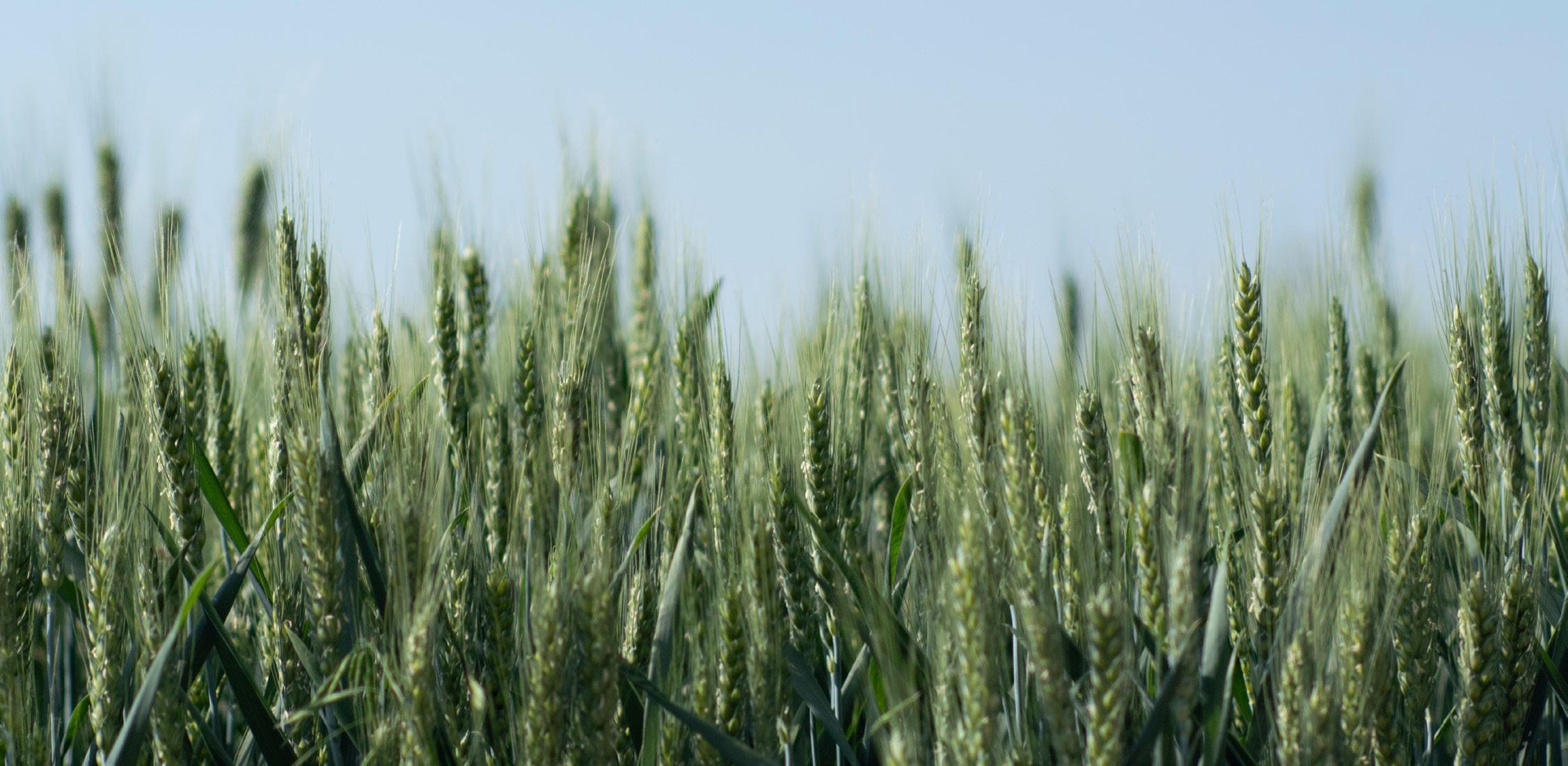

Cereals
Trusted plant protection solutions.
Clayton Plant Protection formed in 1991, recently celebrated over 30 years in the Ag industry, and have evolved rapidly to market and distribute a wide range of crop protection products across UK and European markets.
The company is wholly family owned with an excellent reputation in the industry for trust, building established relationships and highquality products with a known provenance.
Clayton is continuously innovating to provide cost effective product options and uniquely, ensures an alternative choice for customers and growers to the larger multinational Ag businesses.


David O’Mahony Managing Director

Clayton offer a wide range of leading products for cereal crops this spring. This guide brings together our full range of crop protection products for cereal crops, including fungicides, herbicides, insecticides, and plant growth regulators (PGRs).
Whether you’re targeting key diseases, tackling challenging weeds, managing insect pressure, or optimising crop structure and yield potential, this guide is designed to support you throughout the season.
Our cost-effective products can help put in place the right building blocks for successful disease control.
For more information on the products in this guide please visit our website. If you require information on compatibility tank mixes, please contact us.
info@claytonpp.com www.claytonpp.com
Fungicides
CLAYTON AUGUSTA™
SC formulation containing 250g azoxystrobin
CLAYTON NAVARO ™
EC formulation containing 125g prothioconazole and 125g tebuconazole.
CLAYTON CANYON SC ™
SC formulation containing 500g folpet
CLAYTON TUSKAR ™
EC formulation containing 250g prothioconazole.
CLAYTON TEBUCON 250EW ™
EW formulation containing 250g tebuconazole
CLAYTON TENDRIL™
EC formulation containing 160 g/L prothioconazole and 300 g/L spiroxamine.
Insecticides
CLAYTON SPARTA™
EC formulation, 50 g/l lambda-cyhalothrin
CLAYTON LANARK ™
CS formulation, 100 g/l lambda-cyhalothrin
PGRs
TEPHON™
SC formulation, 480 g/l ethephon
CLAYTON SQUAT ™
SC formulation, 720 g/l chlormequat
CLAYTON TRUSS™
EC formulation, 250 g/l trinexapac-ethyl
CLAYTON MESSIER ™
EC formulation containing 80 g/l clopyralid, 2.5 g/l florasulam and 100 g/l fluroxypyr
CLAYTON FLURRY ™
EC formulation containing 200 g/l fluroxypyr
CLAYTON COCOON ™
SC formulation containing 400 g/l Clopyralid
CLAYTON RS200 ™
WSG formulations containing 200 g/kg Metsulfuron-methyl
CLAYTON RALLY CX ™
WSG formulations containing 200 g/kg Metsulfuron-methyl
CLAYTON FACET XL™
SC formulation, 400 g/l flufenacet and 100 g/l diflufenican
CLAYTON SABRE XL™
SC formulation, 400 g/l flufenacet and 100 g/l diflufenican
CLAYTON COMPLY ™
EC formulation containing 800g/l prosulfocarb
CLAYTON EL NINO ™
SC formulation containing 500 g/l diflufenican
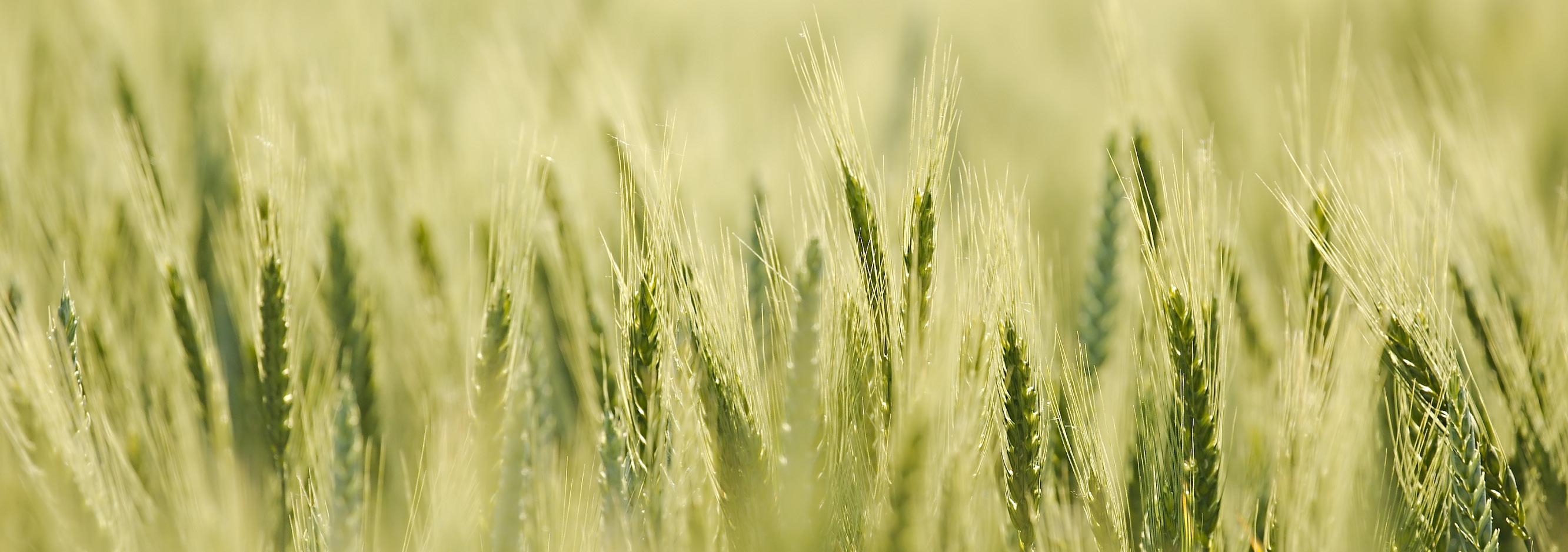
For further information on products in this guide and our full product range please click on the button to visit our website. Find out
info@claytonpp.com www.claytonpp.com
Cereal Fungicides
Spring Product Range
Early disease onset in crops varies each season. If cereal crops are not protected at key timings and at early stages of disease development, crop yield potential can be severely impacted.

The benefits of early season disease control!
Early disease onset in crops varies each season. If cereal crops are not protected at key timings and at early stages of disease development, crop yield potential can be severely impacted.

Many fungicide active ingredients rely on protectant activity and therefore must be applied before disease becomes established.
With an expanding range of proven, cost-effective fungicide formulations, Clayton provides valuable choice, flexibility and ideal baseline products for tackling cereal diseases this spring.
CEREAL FUNGICIDES - PRODUCT OVERVIEW
CLAYTON AUGUSTA™
SC formulation, 250g azoxystrobin
CLAYTON NAVARO™
EC formulation, 125g prothioconazole & 125g tebuconazole.
CLAYTON CANYON SC™
SC formulation, 500g folpet
CLAYTON TUSKAR™
EC formulation, 250g prothioconazole.
CLAYTON TEBUCON 250 EW ™
EW formulation, 250g tebuconazole
CLAYTON TENDRIL™
SC formulation, 160 g/L prothioconazole & 300 g/L spiroxamine
Clayton Augusta™
Effective, useful systemic and protectant strobilurin fungicide.
Use Rate: Apply at 1.0 l/ha for a maximum of 2 treatments per crop.
Target Diseases: Wheat: Brown rust, Ear diseases (Cladosporium, Alternaria), Glume blotch, Yellow rust. Can reduce severity of Take-all.
Barley: Brown rust, Rhynchosporium leaf blotch – reduction, Net blotch. Can reduce severity of Take-all.
Effective against key cereal diseases including rusts, blotches, and ear diseases.
Proven Azoxystrobin Performance – Trusted strobilurin active delivering consistent results in wheat and barley.
Supports Root Health – can reduce severity of take-all, protecting yield and plant resilience.
Flexible tank mix compatibility options for users

Clayton Navaro™
Powerful, broad-spectrum co-form offering a great balance of high efficacy and cost-effective disease control this spring.
Wheat OSR Barley Oats Winter Rye
Active Ingredients: 125g/l prothioconazole and 125g/l tebuconazole
Use Rate: Wheat / Winter rye: Apply at 1.0 L/ha for a maximum of 2 treatments per crop before end of flowering (GS69).
Barley / Oats: Apply at 1.0 L/ha for a maximum of 2 treatments per crop up to beginning of flowering (GS61).
Target Diseases:
Wheat: Septoria, Rusts, Glume blotch, Tan spot (Control). Powdery mildew (Moderate control). Eyespot, Fusarium ear blight, Sooty moulds, Mycotoxin deoxynivalenol DON (Reduction).
Barley: Powdery mildew, Rusts, Net blotch, Rhynchosporium leaf blotch (Control). Eyespot, Fusarium ear blight, Sooty moulds (Reduction).
A powerful systemic, protectant and curative fungicide
Perfect choice for disease control at early season timings
High quality EC co-formulation containing prothioconazole
Flexible tank mix compatibility options for users

at info@claytonpp.com
Clayton Tuskar™
Powerful, high-loaded systemic, protectant and curative triazole fungicide for great value disease control and a perfect partner product this spring.
Wheat OSR Barley Durum Wheat Oats Winter Rye Triticale
Active Ingredients: 250g/l prothioconazole
Use Rate: Wheat / Durum wheat / Winter rye: Apply at 0.8 L/ha for a maximum of 3 treatments per crop before GS71.
Barley / Oats: Apply at 0.8 L/ha for a maximum of 2 treatments per crop up to and including GS61.
Target Diseases:
Wheat: Control of Powdery mildew, Yellow rust. Moderate control of Septoria, Brown rust, Fusarium ear blight, Glume blotch and Tan spot. Reduction of Eyespot and Mycotoxin deoxynivalenol (DON).
Barley: Control of Powdery mildew, Yellow rust, Brown rust, Rhynchosporium leaf blotch and Net blotch. Moderate control of Fusarium ear blight. Reduction of Eyespot.
Powerful systemic, protectant, curative and eradicant fungicide mixture.
Perfect choice for disease control at early timings and as an alternative to new chemistry.
Premium quality, added value co-form containing spiroxamine and prothioconazole.
Spiroxamine helps get other actives into the plant more effectively for higher efficacy.
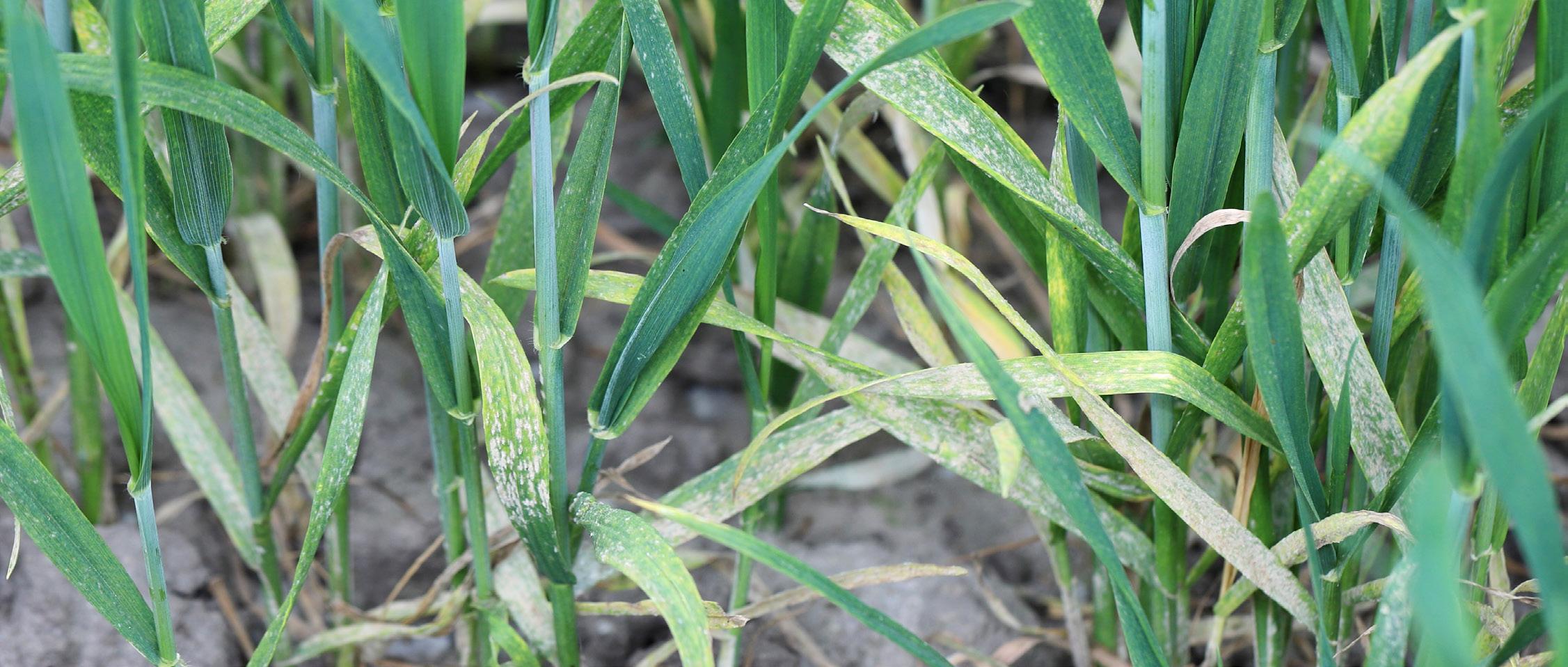
For further information on Clayton Tuskar, please refer to the product label and for information on compatibility tank mixes, please contact us at info@claytonpp.com
Tebucon 250EW™
A reliable systemic triazole fungicide for cost-effective cereal disease control.
OSR Barley Oats Winter Rye Peas Beans
Wheat (excluding durum)
Active Ingredients:
250 g/l tebuconazole
EW Formulation
Concentrated Aqueous Emulsion
Use Rate: Apply at 1.0 l/ha for a maximum of 2 treatments per crop up to and including GS71. First treatment must be applied after GS30 and before GS39. A second treatment cannot be then applied until after GS40.
Target Diseases:
Wheat: Control of Yellow rust, Brown rust and Ear disease complex (Fusarium, Alternaria and Cladosporium). Moderate control of Septoria and Powdery mildew.
Barley: Control of Yellow rust, Brown rust. Moderate control of Powdery mildew, Rhynchosporium. Reduction of Net blotch.
Effective control of Tellow and Brown rust in wheat and barley.
High-loaded, straight tebuconazole formulation.
Cost-effective disease control option.
Beneficial growth regulatory effect on forward crops.

For further information on Clayton Tebucon 250EW, please refer to the product label and for information on compatibility tank mixes, please contact us at info@claytonpp.com
Canyon SC™
Versatile multi-site fungicide, offering reliability, added efficacy, and the ideal partner choice for disease control in cereals.
Active Ingredients: 500g folpet SC Formulation Suspension Concentrate
Use Rate & Timing: Winter wheat / Spring wheat / Winter barley / Spring barley / Triticale: Apply at 1.0-1.5 L/ha for a maximum of 2 treatments per crop up to GS59.
Target Diseases:
Reduction of Septoria leaf spot in winter wheat, spring wheat and triticale.
Reduction of Rhynchosporium leaf blotch in winter barley, spring barley and triticale.
Moderate control of Net blotch and Ramularia leaf spot in winter and spring barley
Versatile contact, protectant multi-site fungicide to widen disease spectrum
Perfect choice for disease control at early timings before diseases establish
A multi-site helps with good fungicide resistance management practices
Flexible tank mix compatibility options for users

For further information on Clayton Canyon SC, please refer to the product label and for information on compatibility tank mixes, please contact us at info@claytonpp.com
Clayton Tendril™
High efficacy, dual active co-formulation for control of a broad range of diseases in cereals.
Active Ingredients: 160 g/L prothioconazole and 300 g/L spiroxamine SC Formulation Suspension Concentrate
Use Rate: Apply at 1.25 L/ha for a maximum of 2 treatments per crop (with a 21 day spray interval) before BBCH 69 for wheat, durum wheat, rye, triticale and up to BBCH 61 for barley, oats.
Target Diseases:
Wheat: Control - Eyespot, Septoria leaf spot, Glume blotch, Powdery mildew, Yellow rust. Moderate control - Brown rust, Tan spot, Fusarium ear blight. Reduction – Sooty moulds.
Barley: Control – Eyespot, Powdery mildew, Yellow rust, Brown rust, Leaf blotch (Rhynchosporium), Net blotch.
Rye: Control – Eyespot, Powdery mildew, Brown rust, Leaf blotch (Rhynchosporium). Moderate control - Fusarium ear blight. Reduction – Sooty moulds.
Oats: Control – Eyespot, Crown rust, Mildew.
Powerful systemic, protectant, curative and eradicant fungicide mixture.
Perfect choice for disease control at early timings and as an alternative to new chemistry.
Premium quality, added value co-form containing spiroxamine and prothioconazole.
Spiroxamine helps get other actives into the plant more effectively for higher efficacy.
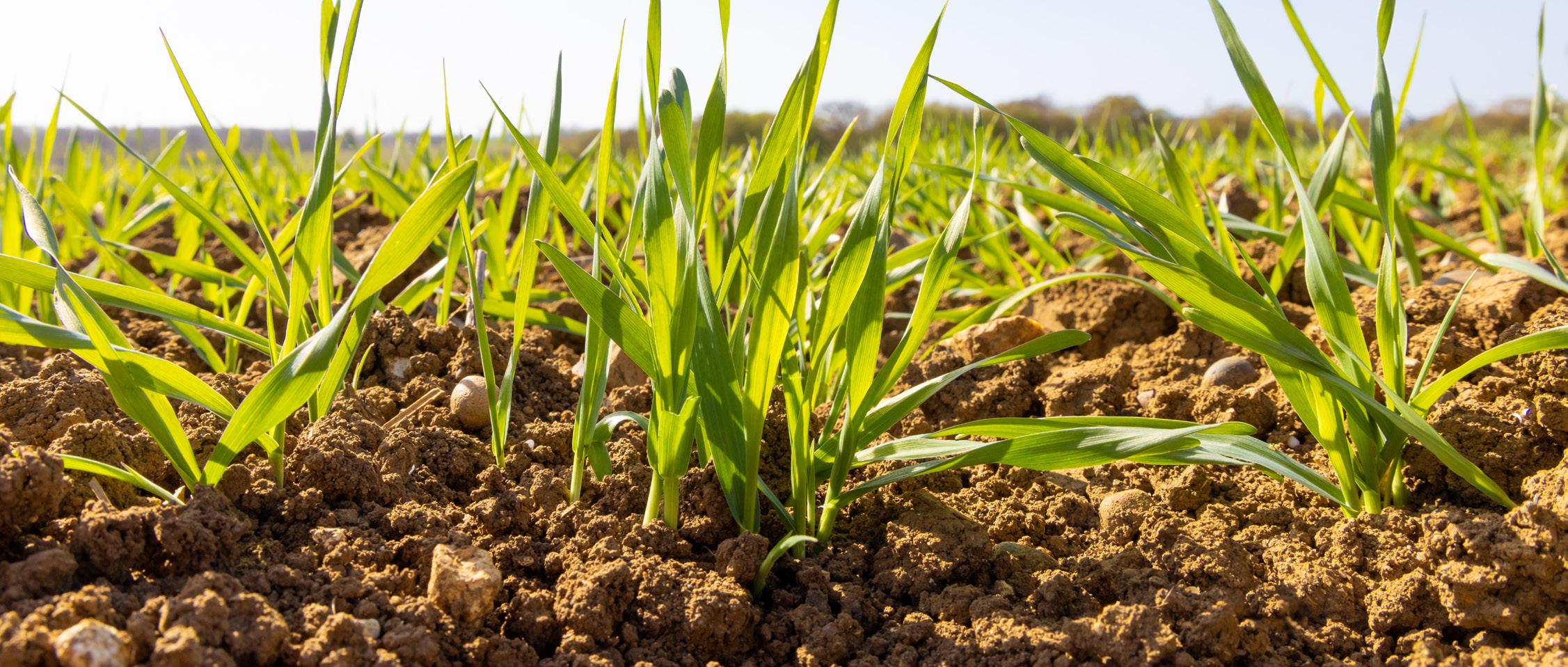

Cereal fungicide programmesManaging fungicide resistance.
Fungicide programmes are an essential component of disease management strategies.
Generally, the T1 and T2 fungicide timings give a good yield response in winter wheat and winter barley.
The earlier T0 and later T3 timings can give smaller yield responses but can be important for protecting early disease onset or for protecting grain quality later, depending on the season and disease pressure.

For further information on products in this guide and our full product range please visit www.claytonpp.com
Best Practices
• Exploit all practical, non-chemical control options
• Use varieties with resistance to the main diseases of concern
• Minimise the number of applications – only use fungicides when the risk or presence of disease warrants treatment, and treat before the infection becomes well established
• Use the minimum dose required to effectively control the target disease
• Include a multisite fungicide, where available, in both the early and lateseason sprays
• Make use of effective fungicides with different modes of action in alternate sprays or mixtures
• Avoid repeat applications of the same mode of action
Winter Wheat Fungicides Timing Programme 2025
T0 Timing

2-4 weeks earlier than T1. Consider alternatives such as multi-sites or strobilurins (Clayton Augusta) or add a multi-site (Clayton Canyon) to protect the azole.
T0 fungicides offer the best economic return when Mildew, Yellow rust or Brown rust risk is high, particularly on susceptible varieties where these diseases are active. A spray targeted at foliar diseases at T0 can also help control eyespot.
A spray for Septoria at this timing is not usually associated with yield benefits, even in high disease pressure situations. However, it can provide protectant activity and insure against a delayed T1.
For mildew, use a mildewicide. If rusts are the target, use a strobilurin e.g. Clayton Augusta or an azole e.g. Clayton Tebucon 250EW For septoria tritici, where the spray is an insurance against a weather-delayed T1, use an azole and/or multisite. Avoid using an SDHI at this timing to reduce the risk of resistance.
T1 Timing
Fully emerged leaf 3 (GS31–33). Mix azoles as base building blocks for disease control (Clayton Navaro, Clayton Tuskar) with multi-sites.
T1 sprays can help protect the fully emerged leaf 3 mainly from Septoria and provide additional protection from other foliar diseases (including rusts and mildew) on leaves 2 and 4; it is also a key timing for eyespot control.
Optimal timing is as soon as leaf 3 is fully emerged. This usually coincides with GS32, but can vary between crops. In very early sown crops, leaf 3 can emerge at GS33. In late-sown crops, it can emerge at GS31. Prompt timing is important on Septoria susceptible varieties.
T1 sprays are often based on an azole plus multisite mixture with the addition of new chemistry. If yellow rust is the target, the addition of a strobilurin such as Clayton Augusta should be considered. Where eyespot risk assessment shows a high risk, include a product with good efficacy against eyespot (e.g. Clayton Navaro, Clayton Tuskar). If mildew levels are high and on susceptible varieties, consider a specific mildewicide. To manage resistance risk always follow FRAG guidelines.
Note: Resistance management should be considered throughout the spray programme.
Winter Wheat Fungicides Timing Programme 2025
T2 Timing

Flag leaf fully emerged (GS39). Mix azoles (Clayton Navaro, Clayton Tuskar) with multi-sites and new chemistry for optimal efficacy and resistance management.
T2 is often the most important spray timing in wheat. It controls disease on the top two leaves, which contribute about 65% to yield. Yield responses to this spray timing are consistently profitable. The main target disease is Septoria tritici, although rusts are also important targets. Adjust dose to reflect risk.
Apply this spray as soon as most flag leaves on the main tillers have fully emerged (GS39). Use an azole / SDHI / multi-site mixture to ensure good control of Septoria and rusts. An appropriate strobilurin such as Clayton Augusta can give additional rust protection. In addition to maximising efficacy, the use of mixtures is also essential for resistance management. Inclusion of a multisite can help to protect azoles and SDHIs from resistance as well as contributing to disease control.
T3 Timing
GS59 or GS63–65. Add a multi-site (Clayton Canyon SC) to azoles for added septoria control and resistance management.
At GS59, use a T3 spray to top up foliar disease control on the top two leaves or, at GS63–65, to control Fusarium/Microdochium ear blight. Consider the relative importance of foliar disease and ear blight to decide which timing to use.
If no T3 spray is planned, it is important not to delay the T2 spray. Delaying the T2 spray to allow part of the ear to emerge will lead to poorer foliar disease control on the critical flag leaf and leaf 2. Sprays applied around GS59 can help maintain canopy size and prolong its duration by protecting leaf and ear green area against foliar diseases such as Brown rust but this timing is not effective for controlling ear blight.
Fusarium and Microdochium species cause ear blight. The optimum time to spray is at early-to-mid-flowering (GS63–65). Sprays are not effective once flowering is complete. As well as reducing yield loss, the control of ear blight at GS63–65 also helps to reduce mycotoxins produced by Fusarium species. Where fusarium mycotoxins are not a major concern (e.g. resistant feed wheats), this spray is not usually required.
For ear disease control, use azoles or azole mixtures such as prothioconazole or metconazole with specific activity against ear disease at a minimum of a threequarter dose. Most azoles also have brown rust activity although their activity varies. On Septoria susceptible varieties, ensure the azole is also active against Septoria. Add a multisite for added Septoria control and resistance management (within label recommendations – folpet can be used up to GS59). Consider adding a strobilurin, where grain filling is likely to be prolonged or where Brown rust risk is high.
Note: Resistance management should be considered throughout the spray programme.
Winter Barley
Fungicides Timing Programme 2025
Yield potential in barley is determined early in the season, so early disease control is relatively important, but season-long protection maximises grain storage capacity. There are four key timings, but T1 and T2 sprays are the most important.

T0 Timing
GS23–29 late tillering, early spring consider Clayton Navaro, Clayton Augusta or Clayton Tebucon 250EW
Yield responses to fungicides are highly variable at this timing. Only spray if overwintering disease levels are high in susceptible varieties.
Mildew, brown rust, rhynchosporium and net blotch are the main diseases to consider at this timing. Use a specific mildewicide for mildew control; otherwise, use an azole or strobilurin.
To minimise selection for resistance, use different modes of action to those planned for later in the season.
T1 Timing
GS30–32, stem extension consider Clayton Navaro, Clayton Tuskar, Clayton Canyon SC.
This is the main timing in winter barley, with a 60% response to fungicides achievable. Treatment helps maximise survival of formed tillers and spikelets, increasing final grain numbers.
Rhynchosporium, net blotch, mildew, eyespot and brown rust are the main diseases to consider at T1. An azole in mixture with a strobilurin or SDHI will control most target diseases.
If brown rust is a particular threat, use a strobilurin. Use mixtures with different modes of action with similar efficacy against the diseases present, where possible. Add a multisite to protect the other modes of action. Folpet is the only available multisite for barley.
Note: Resistance management should be considered throughout the spray programme.
Winter Barley Fungicides Timing Programme 2025
Yield potential in barley is determined early in the season, so early disease control is relatively important, but season-long protection maximises grain storage capacity. There are four key timings, but T1 and T2 sprays are the most important.

T2 Timing
GS39–59, flag leaf & ear emergence consider Clayton Navaro, Clayton Canyon SC.
About 40% of the fungicide yield response can come from this timing. Greater yield responses often occur in late harvest years. Brown rust and net blotch are targets, along with rhynchosporium in wetter regions and in wet summers. Applications around flag leaf emergence can reduce spikelet mortality during booting and extend canopy duration. If there are high levels of late-developing net blotch and brown rust, use later applications, but use earlier applications when disease pressure (especially Rhynchosporium) is generally high.
Use an azole in a mixture with a strobilurin or SDHI to control most target diseases. If brown rust is a particular threat, use a strobilurin. The latest application time for many fungicides in malting crops is the start of ear emergence. Check product labels to determine whether they are suitable for use when the T2 is delayed.
Alternate modes of action, compared with the T1 spray, where possible. Use a different azole to that used at T1 and add a multisite to protect the other modes of action. Folpet is the only available multisite for barley.
T3 Timing
After GS59 assess economical benefit.
Avoid sprays after GS59, as they do not normally give an economic yield benefit and few products are approved. Where fusarium head blight is a concern, use nonchemical control measures such as crop rotation. In very high-risk situations, consider a spray during early flowering (GS63–65), subject to the latest timings on the label.
Note: Resistance management should be considered throughout the spray programme
Cereal Herbicides
Spring Product Range
Whether as a clean-up opportunity or to tackle weeds early before they grow away, effective spring weed control is crucial for supporting healthy crop growth and preventing yield loss.

Cost-effective weed control in cereal crops this spring.
Spring is a critical time to take control of broad-leaved weeds in cereal crops.
Effective spring herbicide programmes help support crop competitiveness against weeds, particularly in thin or backward crops where weeds pose a greater risk.
Checking crop condition and weed populations early allows growers to tailor their approach, especially where autumn control hasn’t been fully effective or additional weed flushes have emerged.
Clayton’s spring herbicide range offers reliable, cost-effective solutions for broadspectrum control across all key cereal types, including wheat, barley, oats, rye, triticale, and spelt.
Our herbicide range is designed to suit a wide variety of grower situations, whether targeting chickweed and cleavers, tough mayweeds, or a broad mix of problem species.

CLAYTON MESSIER™
EC formulation, 80 g/l clopyralid, 2.5 g/l florasulam & 100 g/l fluroxypyr
CLAYTON FLURRY ™
EC formulation, 200 g/l fluroxypyr
CLAYTON COCOON™
SC formulation, 400 g/l clopyralid
CLAYTON RALLY CX™
WSG formulation, 200 g/kg metsulfuron-methyl
CLAYTON RS200™
WSG formulation, 200 g/kg metsulfuron-methyl
COMING SOON CLAYTON ROCKSTAR
Co-formulation herbicide containing Pyroxsulam and Florasulam for high performance spring weed control in cereals.
SPRING CEREAL HERBICIDES - PRODUCT OVERVIEW
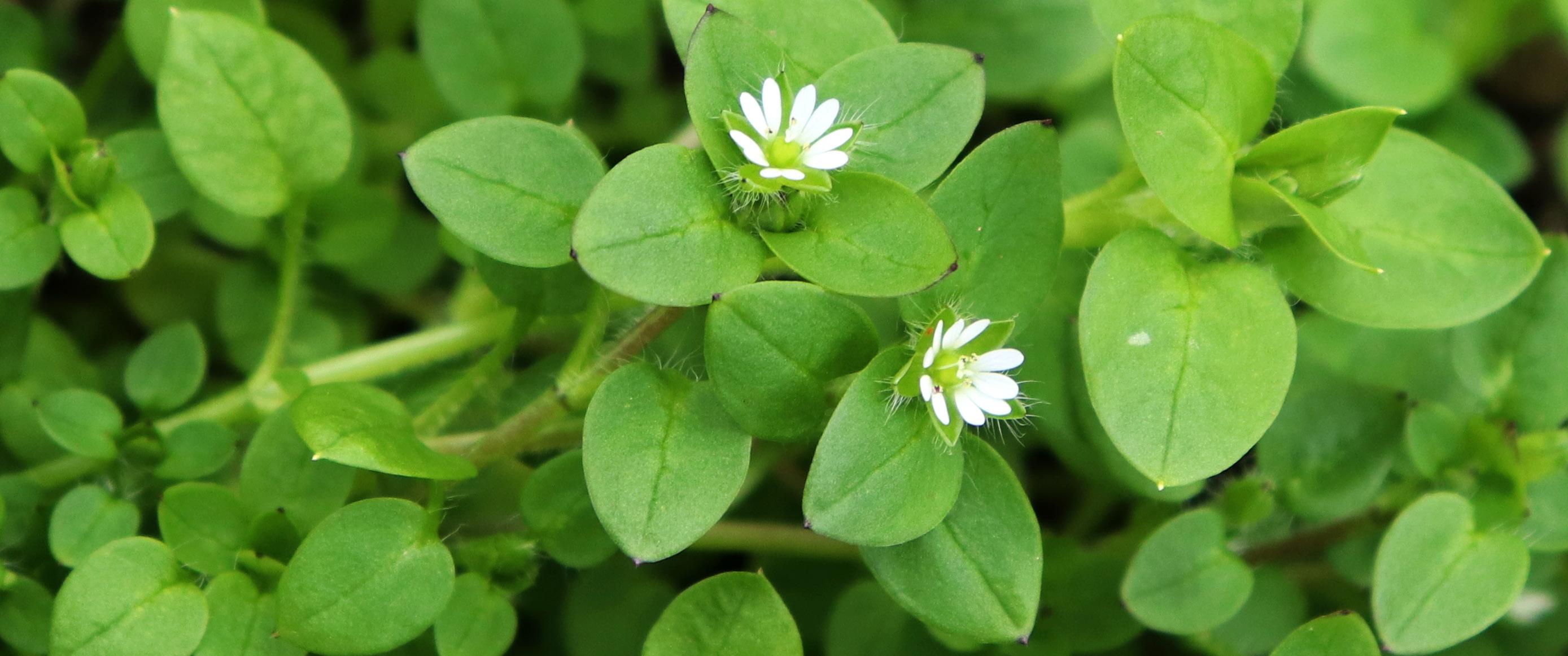
Broad-leaved weeds Resistance Management
To help prevent the build-up of resistant weed populations, namely Chickweed, Poppy, Groundsel and Mayweed, the following strategies should be considered:
• Crop rotations, avoid repeated use of sulphonyl-urea herbicides in mono crop situations.
• Monitoring and testing where weed resistance is suspected.
• Avoid applications of reduced rates to weeds beyond the target growth stage for control.
• Alternative modes of actions either in sequences and/or tank mixtures.
Suggested herbicide strategies for key weed species:
• Chickweed - use of preemergence herbicides and/or tank mixtures with fluroxypyr.
• Groundsel & Poppy – use of pendimethalin in the programme.
• Mayweed – tank-mixtures or sequences with clopyralid.
Information For further information on products in this guide, visit our website www.claytonpp.com and for information on compatibility tank mixes, please contact us at info@claytonpp.com MORE INFORMATION
Clayton Messier ™
Broad-spectrum broad-leaved weed control in both winter cereals and spring cereals, providing useful flexibility on farm and in rotations.
Cereals
Active Ingredients:
Crops (Cereals)
Use Rate & Timings:
80 g/l clopyralid, 2.5 g/l florasulam & 100 g/l fluroxypyr
Winter Wheat, Winter Barley, Winter Oats, Winter Rye, Winter Triticale, Spring Wheat, Spring Barley, Spring Oats, Spring Rye, Durum Wheat, Spelt.
Apply at 5.0 L/ha pre-emergence or 3.0 L/ha early post-crop emergence up to early tillering (GS21).
Max. individual dose: 1.0 L/ha
Max. total dose: 1.0 L/ha (maximum number of applications; one per year)
Latest timing of application: Before flag leaf sheath extending (GS39) for Winter sown cereals; wheat, barley rye, triticale, spelt (and the same winter sown cereals undersown with grass). Before flag leaf sheath extending (GS39) for Spring sown cereals; wheat, barley, durum wheat, rye (and the same spring cereals undersown with grass). Before second node detectable stage (GS31) for Winter and spring oats, winter and spring oats undersown with grass.
Water Volume: 80 – 250 L/ha
Target Weeds: Cleavers, Common chickweed, Corn spurrey, Creeping thistle (from seed), Field forget-menot
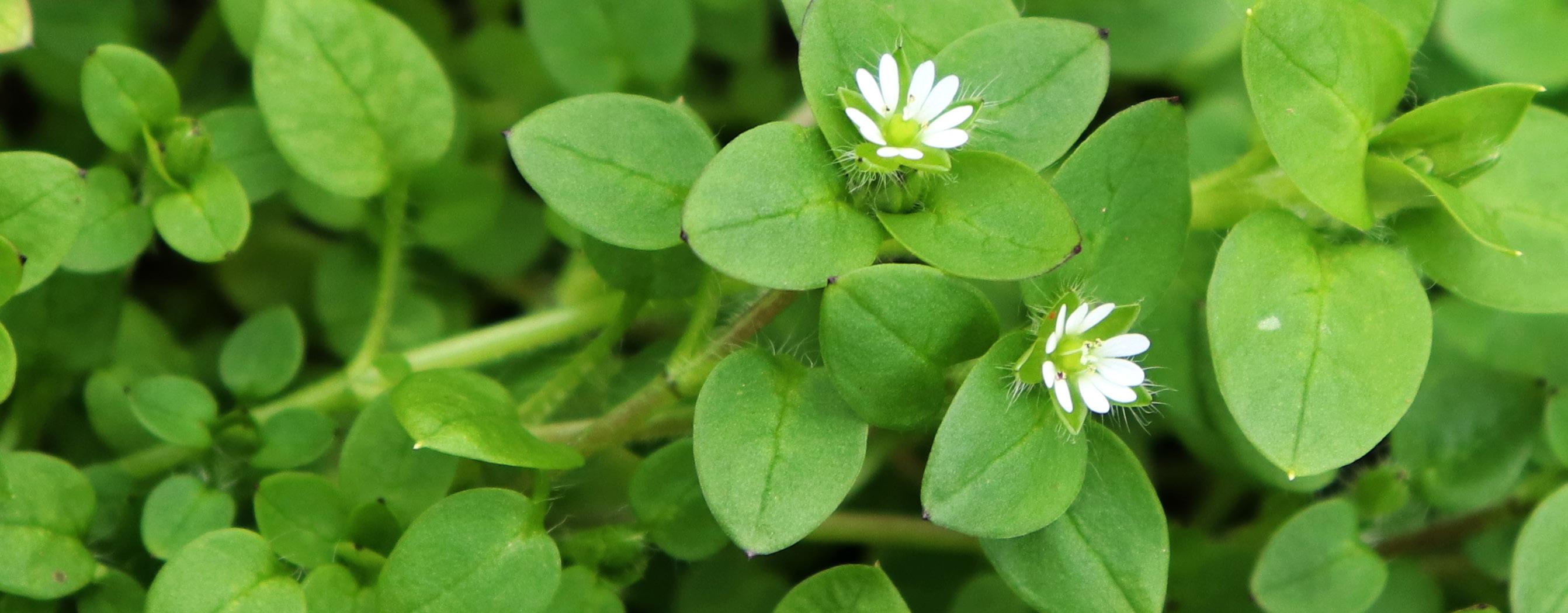
For further information on Clayton Flurry, please refer to the product label and for information on compatibility tank mixes, please contact us at info@claytonpp.com
Clayton Flurry ™
A spring applied herbicide for the control of a wide range of broad-leaved weeds in winter and spring cereals.
Cereals Grassland Maize
Active Ingredients: 200 g/l fluroxypyr
Crops (Cereals)
EC Formulation Emulsifiable Concentrate
Winter Wheat, Winter Barley, Winter Oats, Spring Wheat, Spring Barley, Spring Oats, Winter Rye, Durum Wheat, Triticale.
Use Rate: Max. individual dose: 1.0 L/ha winter wheat, winter barley, winter oats, winter rye, durum wheat, triticale, 0.75 L/ha spring wheat, spring barley, spring oats, Max. total dose: As above
Latest timing of application:
Before flag leaf sheath opening: winter wheat, winter barley
Before second node detectable: winter oats, spring oats, winter rye, durum wheat, triticale
Before flag leaf sheath extending: spring wheat, spring barley
Water volume: 200 – 400 L/ha
Target Weeds: Cleavers, common chickweed and a range of other broad-leaved weeds
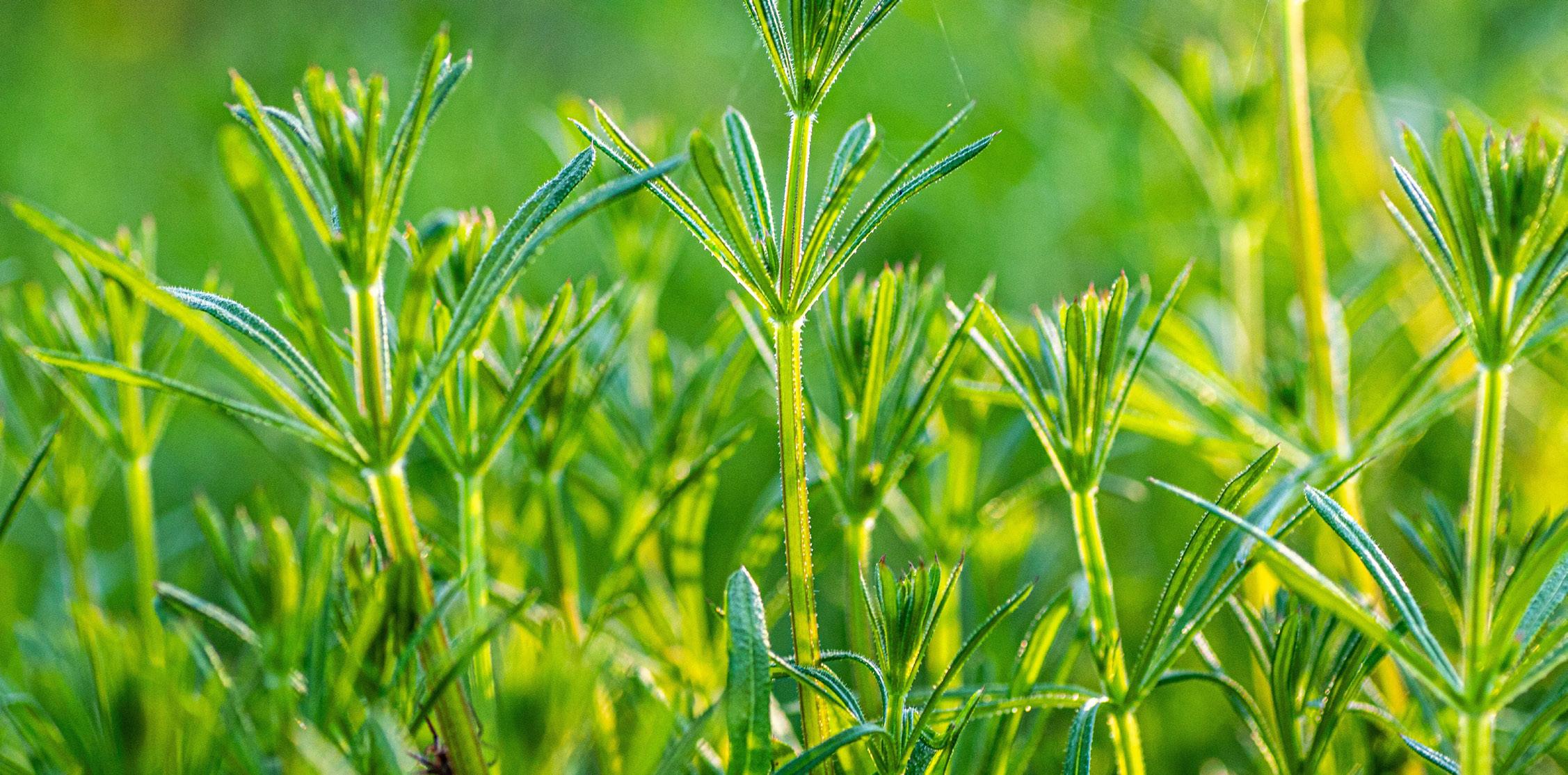
For further information on Clayton Flurry, please refer to the product label and for information on compatibility tank mixes, please contact us at info@claytonpp.com
Clayton Cocoon ™
A reliable post-emergence herbicide for the control of a range of annual and perennial broad-leaved weeds in cereals including mayweeds.
Active Ingredients: 400g clopyralid
Crops (Cereals)
Winter Wheat, Winter Barley, Winter Oats, Spring Wheat, Spring Barley, Spring Oats.
Use Rate & Timings: Cereals (Winter and Spring Wheat, Barley, Oats). Clayton Cocoon at 0.175 L/ha added to a suitable formulation of fluroxypyr will improve control of corn marigold, groundsel, pineapple weed, scented mayweed, scentless mayweed and smooth sowthistle.
Maximum Individual Dose: 0.175 L/ha
Max. total dose: 0.175 L/ha
Water volume: 200 L/ha recommended.
Target Weeds: Corn marigold, Groundsel, Smooth sowthistle, Scented mayweed, Scentless mayweed, Pineapple weed.

Clayton RS200 ™
Spring applied herbicide for excellent, wide-ranging control of broad-leaved weeds in wheat, barley, oats and triticale.
Active Ingredients: 200 g/kg metsulfuron-methyl
Use Rate & Timing: Apply in spring no later than BBCH 39.
Max. individual dose: 30 g/ha.
Max. number of applications: 1 per crop.
Water volume: 150 – 400 L/ha
Target Weeds:
WSG Formulation
Water soluble granule
Include all brassicas (Charlock, Shepherd’s purse, Runch), Common chickweed, Mayweeds, Cranesbill, Red dead-nettle, Field speedwell, Forget-me-not, Pale persicaria, Field pansy, Common poppy, Redshank
High-loaded, sulfonylurea herbicide (200 g/ kg metsulfuron-methyl) WSG formulation
Wide weed control spectrum across key spring cereal crops
Versatile cereal crop usage
Flexible tank mix compatibility with spring partners
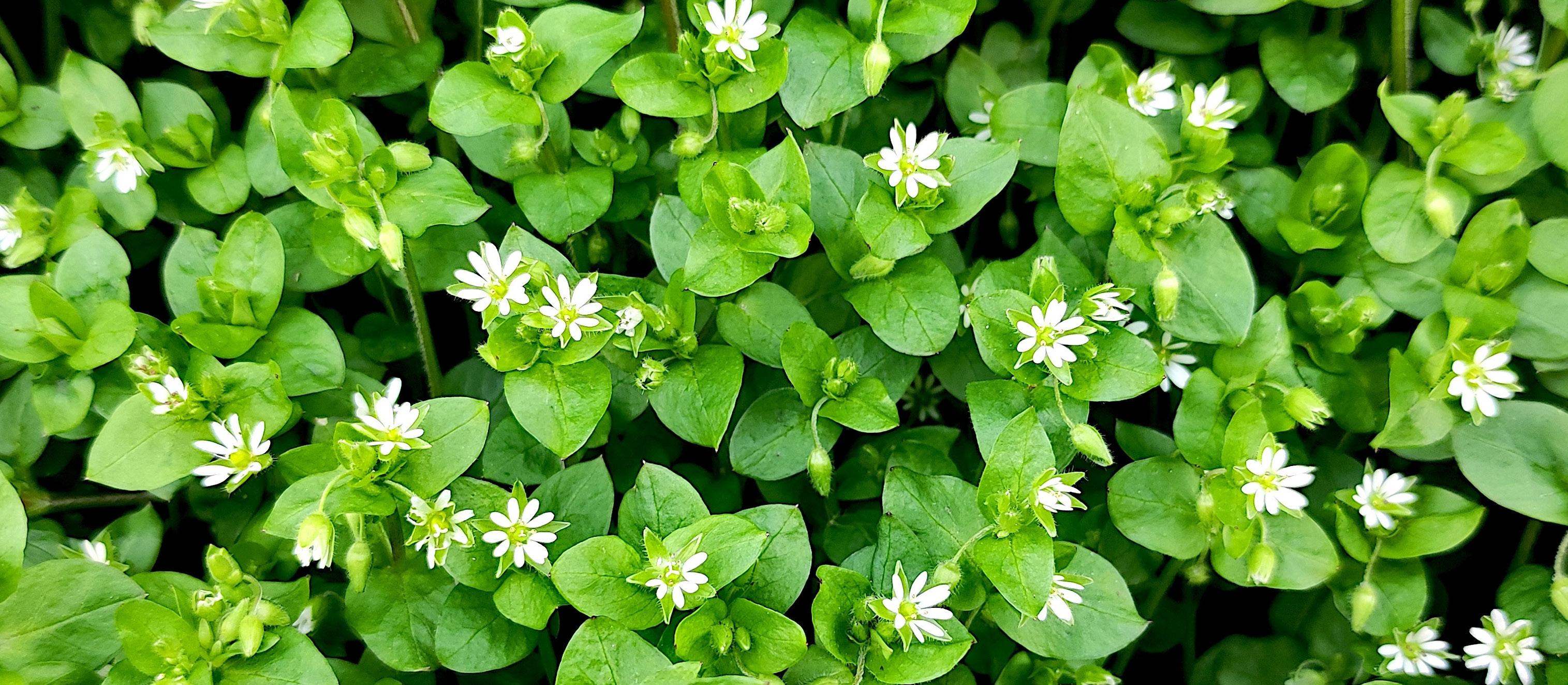
For further information on Clayton RS200, please refer to the product label and for information on compatibility tank mixes, please contact us at info@claytonpp.com
Wheat Cereals Barley Oats Triticale
Clayton Rally CX ™
Spring applied herbicide for excellent, wide-ranging control of broad-leaved weeds in wheat, barley, oats and triticale.
Active Ingredients: 200 g/kg metsulfuron-methyl
Use Rate & Timing: Apply in spring no later than BBCH 39.
Max. individual dose: 30 g/ha.
Max. number of applications: 1 per crop.
Water volume: 150 – 400 L/ha
Target Weeds:
Include all brassicas (Charlock, Shepherd’s purse, Runch), Common chickweed, Mayweeds, Cranesbill, Red dead-nettle, Field speedwell, Forget-me-not, Pale persicaria, Field pansy, Common poppy, Redshank
High-loaded, sulfonylurea herbicide (200 g/ kg metsulfuron-methyl) WSG formulation
Wide weed control spectrum across key spring cereal crops
Versatile cereal crop usage
Flexible tank mix compatibility with spring partners

For further information on Clayton Rally CX, please refer to the product label and for information on compatibility tank mixes, please contact us at info@claytonpp.com MORE INFORMATION
CLAYTON RALLY CX
Clayton Rally CX™ can be tank mixed with other cereal herbicides to provide improved control and a wider weed spectrum (see below). Tank-mix partners should only be used if the mixture can be applied according to the normal label requirements of each product.
Do not tank-mix Clayton Rally CX™ on Oats or Triticale.

Additional/improved control with a tank mix of Clayton Rally CX and mecoprop-p (600 g/L):
Control up to 2 expanded true leaves
Buttercup
Black-Bindweed
Cleaver
Control up to 6 expanded true leaves
Buttercup
Cleaver
Control up to 20cm across Common Field Speedwell Common Field Speedwell
Fumitory
Ivy-leaved Speedwell
Fumitory Cleaver
Ivy-leaved Speedwell Ivy-leaved Speedwell Knotgrass Knotgrass Knotgrass
Additional or improved control in tank mix with Clayton Flurry (200 g/L fluroxypyr):
Control up to 2 expanded true leaves
Black-Bindweed
Cleaver
Control up to 6 expanded true leaves
Black-Bindweed
Cleaver
Control up to 20cm across Corn Marigold Corn Marigold Forget-me-not Forget-me-not
Fumitory
Fumitory Cleaver
Knotgrass Knotgrass Forget-me-not
Cereal Herbicides
Autumn Product Range
Achieving good crop establishment to maximise yields relies on effective, early season control of problem grass weeds and broad-leaved weeds.

Safe-guard cereals this autumn with effective weed control.
Clayton Plant Protection offers a wide range of leading herbicides for cereal crops this autumn.
Achieving good crop establishment to maximise yields relies on effective, early season control of grass and broad-leaved weeds.
Careful planning in terms of product choice and the effective stacking of residual herbicides for pre- and post-emergence weed control will help growers achieve the best start.
Our products can help put in place the correct building blocks for successful weed control.
Ensure a good, cost-effective start to weed control this autumn.
With a range of reliable, autumn herbicides available to growers, achieving good crop establishment in cereals to maximise yields relies on effective, early season control of problem grass weeds and broad-leaved weeds.
Careful planning in terms of product choice and effective stacking of residual herbicides for targeting pre- and post-emergence weed control will help growers achieve the best start for successful weed control.

CLAYTON FACET XL™
SC formulation, 400 g/l flufenacet and 100 g/l diflufenican
CLAYTON SABRE XL™
SC formulation, 400 g/l flufenacet and 100 g/l diflufenican
CLAYTON COMPLY ™
EC formulation containing 800g/l prosulfocarb
CLAYTON EL NINO ™
EC formulation containing 500 g/l diflufenican
AUTUMN CEREAL HERBICIDES - PRODUCT OVERVIEW

What are the benefits of early weed control?
Early season weed control is vital for establishing cereal crops successfully. Weeds compete with emerging crops for light, soil moisture and nutrients, so can severely damage yield potential in the early stages.
Tackling weeds effectively before crop emergence and in the first 7-10 days after crop emergence will protect against yield losses.
Blackgrass Focus
For certain weeds including blackgrass there are very few effective post-emergence herbicides, so tackling these weeds early is the only effective option.
Typically, as few as 10 blackgrass plants/ m2 can lead to a potential 5-10% yield loss in winter wheat, so both cultural control and targeted chemistry are essential in an effective blackgrass management strategy.
Cultural practices like delaying drilling until mid-October allow stale seedbed techniques to be used pre-drilling helping to provide a better platform for preemergence herbicides.
Sufficient soil moisture is important for blackgrass germination and the efficacy of residual herbicides therefore cultivation techniques should be managed accordingly.
Good practice for best performance from pre-emergence herbicides is to ensure a consolidated seedbed, without trash or too many clods.
Effective timing (applying pre-ems within 48 hours of drilling) will further improve overall product performance.
Product choice remains vital to tackling blackgrass on farm with ‘residual stacking’ of core active ingredients often necessary to manage populations effectively.
www.claytonpp.com and
please contact us at info@claytonpp.com
Why effective residual stacking is vital for blackgrass control.
Tank mixes (where several products are applied together) or stacking and sequencing (where several products are applied in close succession) are more effective at controlling grass weed populations than individual products.
Residual modes of action are vital for effective blackgrass control and preemergence options are less affected by resistance issues than some post emergence options.
Recent AHDB research highlighted flufenacet as a key active to start with in blackgrass control programmes and that further actives are then necessary to achieve good levels of control.
Our flufenacet co-formulated products Clayton Facet XL and Sabre XL formulated to a high quality, offer a great start point for weed control this autumn.
The herbicide stack should be tailored according to the specific farm and field situation to maximise overall control levels based on the individual weed burden and spectrum, assessing the need for broadleaved weed control as well as grass weed control.
With a supporting range of herbicides containing key actives such as prosulfocarb (Clayton Comply) and diflufenican (Clayton El Nino) this allows for a robust, targeted programme or partner products which can be adapted to individual situations.
Our products provide choice and flexibility for target treatments in the autumn pre-emergence, early post-emergence or late post-emergence timings.

Clayton Facet XL ™
An ideal choice for targeting problem grass and broad-leaved weeds in cereal crops.
Cereals
Active Ingredients: 400g/l flufenacet and 100g/l diflufenican SC Formulation
Crops (Cereals) Winter Wheat, Winter Barley, Spring Wheat, Spring Barley.
Use Rate: Apply at up to 0.9 l/ha (as a split dose*) for pre-emergence and post-crop emergence use. *0.6 L/ha until 31 March in the year of harvest and 0.3 L/ha after 31 March in the year of harvest. Latest time of application before GS23 (Winter Wheat) or before GS24 (Winter Barley).
Target Weeds: Annual Meadow-grass, Common Chickweed, Common Field-speedwell, Forget-menot, Field Pansy, Groundsel, Mayweeds, Red Deadnettle (all Susceptible) and Blackgrass (Moderately Susceptible).
Dual-active flufenacet (400g) and diflufenican (100g) SC coformulation.
Wider labels with more use approvals than other generics, including spring wheat and spring barley.
Higher maximum total dose: 0.9 L/ha than other generic competitors, for powerful weed control.
Added flexibility with sequential split dose applications: 0.6L/ha (until 31 March) followed by 0.3L/ha (after 31 March).
Later cut-off spring application timings to GS23 (winter wheat) and GS24 (winter barley).
Targeting problem grass and broad-leaved weeds in cereals.

For
Clayton Sabre XL ™
An ideal choice for targeting problem grass and broad-leaved weeds in cereal crops.
Cereals
Active Ingredients: 400g/l flufenacet and 100g/l diflufenican SC Formulation Suspension Concentrate
Crops (Cereals) Winter Wheat, Winter Barley, Spring Wheat, Spring Barley.
Use Rate: Apply at up to 0.9 l/ha (as a split dose*) for pre-emergence and post-crop emergence use. *0.6 L/ha until 31 March in the year of harvest and 0.3 L/ha after 31 March in the year of harvest. Latest time of application before GS23 (Winter Wheat) or before GS24 (Winter Barley).
Target Weeds: Annual Meadow-grass, Common Chickweed, Common Field-speedwell, Forget-menot, Field Pansy, Groundsel, Mayweeds, Red Deadnettle (all Susceptible) and Blackgrass (Moderately Susceptible).
Dual-active flufenacet (400g) and diflufenican (100g) SC coformulation.
Wider labels with more use approvals than other generics, including spring wheat and spring barley.
Higher maximum total dose: 0.9 L/ha than other generic competitors, for powerful weed control.
Added flexibility with sequential split dose applications: 0.6L/ha (until 31 March) followed by 0.3L/ha (after 31 March).
Later cut-off spring application timings to GS23 (winter wheat) and GS24 (winter barley).
Targeting problem grass and broad-leaved weeds in cereals.

Clayton Comply ™
Powerful grass and broad-leaved weed control in cereal crops.
Cereals
Potatoes
Active Ingredients: 800g/l prosulfocarb
Crops (Cereals) Winter Wheat, Winter Barley.
EC Formulation Emulsifiable Concentrate
Use Rate: Apply at 5.0 L/ha pre-emergence or 3.0 L/ha early post-crop emergence up to early tillering (GS21).
Target Weeds: Rough-stalked meadow-grass, Common Chickweed, Speedwells, Cranesbill, Forget-menot, Red Deadnettle, Black Nightshade (all Susceptible) and Annual Meadow-grass, Loose silky bent and Cleavers (Moderately susceptible).
Straight prosulfocarb (800g)EC formulation. Powerful grass and broad-leaved weed control in cereals.

For further information on Clayton Comply, please refer to the product label and for information on compatibility tank mixes, please contact us at info@claytonpp.com
Clayton El Nino ™
Powerful grass and broad-leaved weed control in cereal crops.
Cereals
Active Ingredients: 500 g/l diflufenican
Crops (Cereals) Wheat, Barley, Durum Wheat, Rye, Triticale.
SC Formulation Suspension Concentrate
Use Rate: Apply at 0.25 L/ha pre or post-crop emergence in winter wheat & winter barley or 0.2 L/ha pre-emergence in rye and triticale.
Target Weeds: Charlock, Ivy leaved speedwell, Common poppy, Parsley piert, Corn spurrey, Red dead nettle, Field forget-me-not, Shepherd’s purse, Field mouse ear, Treacle mustard, Flixweed, Volunteer oilseed rape, Henbit dead nettle, Wild radish. See product label for full list details.
SC formulation with 500g diflufenican. Flexible mixer option for autumn weed control.

For further information on Clayton El Nino, please refer to the product label and for information on compatibility tank mixes, please contact us at info@claytonpp.com
Cereal Insecticides
Spring Product Range
Protecting cereal crops from damaging insect pests is essential for achieving consistent yields and preserving grain quality.
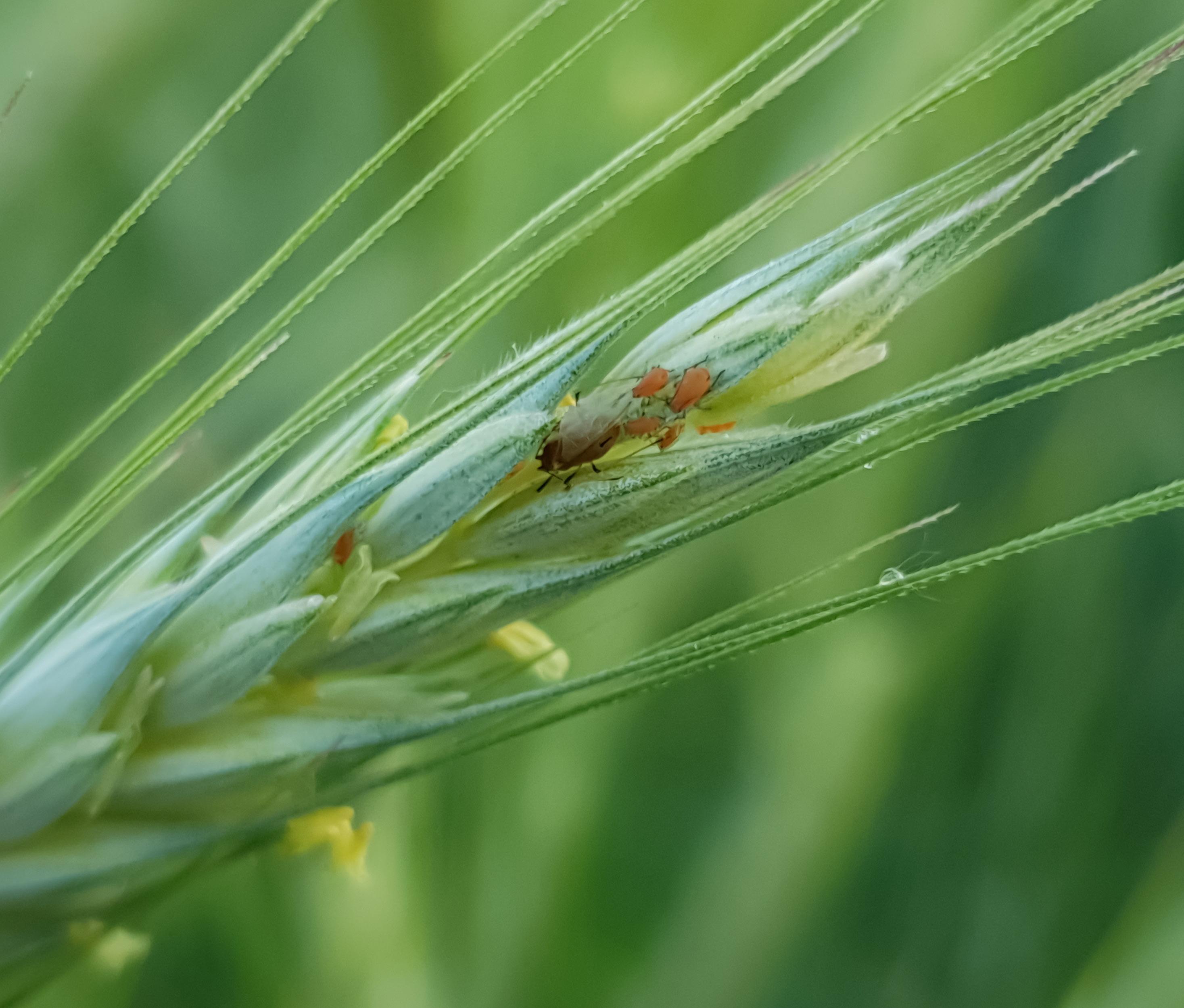
Protecting cereal crops from damaging insect pests is essential for achieving consistent yields and preserving grain quality.
Clayton Lanark and Clayton Sparta are two lambda-cyhalothrin based insecticides that deliver effective control against a range of key cereal pests, including Barley Yellow Dwarf Virus (Aphid Vectors), Summer Aphids, Yellow Cereal Fly, Orange Wheat Blossom Midge, and more.
Both products are approved for use on a wide range of cereal crops and offer the flexibility to fit within integrated pest management programmes.
Whether targeting early-season aphid infestations or protecting ears from later pests, Clayton Lanark and Clayton Sparta help safeguard crop potential from establishment to harvest.
Why Use Clayton Insecticides?
• Fast-acting control of key insect pests in cereal crops
• Flexible use across winter and spring wheat, barley, oats, and durum wheat
• Proven efficacy against aphid vectors of BYDV, grain aphids, yellow cereal fly, orange wheat blossom midge, and gout fly
• Supports integrated pest management (IPM) strategies with targeted timing and maximum application intervals.

SPRING INSECTICIDES - PRODUCT OVERVIEW
CLAYTON LANARK™
CS formulation, 100 g/l Lambda-cyhalothrin
CLAYTON SPARTA™
EC formulation, 50 g/l Lambda-cyhalothrin
Clayton Lanark™
An ideal choice for the control of insect pests in cereal crops.
Active Ingredients: 100 g/l lambda-cyhalothrin
Use Rate & Timings:
CS Formulation Capsule Suspension
Winter and Spring Wheat and Barley, Durum Wheat
Maximum individual dose 50 (ml product/ha)
Maximum total dose 200 (ml/product/ha/crop)
Latest time of application: Before late milk stage (GS 77)
Winter and Spring Oats
Maximum individual dose 50 (ml product/ha)
Maximum total dose 200 (ml/product/ha/crop)
Latest time of application: Before watery ripe stage (GS 71)
The following minimum intervals between applications must be observed: 14 days for wheat, barley, oats. A maximum number of 4 applications per crop must not be exceeded.
Target Pests: Aphids, Yellow Cereal Fly, Orange Wheat Blossom Midge. See product label for full list of pests.

Clayton Sparta ™
An ideal choice for the control of insect pests in cereal crops.
Active Ingredients: 50 g/l lambda-cyhalothrin
Use Rate & Timings: Wheat, Barley
Maximum individual dose 100 (ml product/ha)
Maximum total dose 400 (ml/product/ha/crop)
Latest time of application: Before late milk stage (GS 77)
Oats
Maximum individual dose 100 (ml product/ha)
Maximum total dose 400 (ml/product/ha/crop)
EC Formulation Emulsifiable Concentrate
Latest time of application: Before watery ripe stage (GS 71)
The following minimum intervals between applications must be observed: 14 days for wheat, barley, oats. A maximum number of 4 applications per crop must not be exceeded.
Target Pests: Aphids, Yellow Cereal Fly.
See product label for full list of pests.
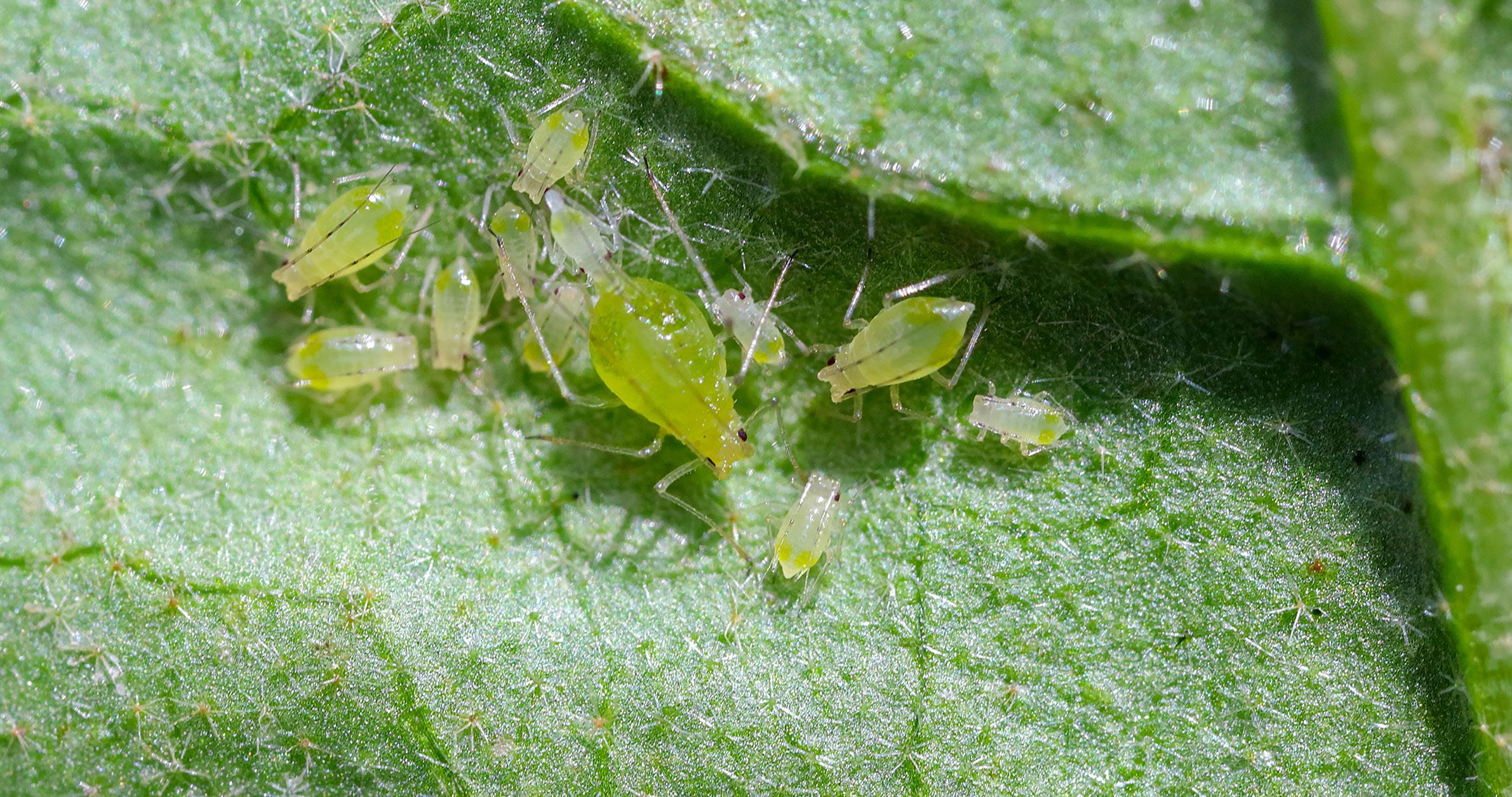
OSR Pear Peas Beans Sugar Beet
Cereals Potatoes
Barley Yellow Dwarf Virus (BYDV) – Aphid Vectors
WINTER WHEAT, WINTER BARLEY, WINTER OATS AND DURUM WHEAT
September-sown cereals (High-risk situations):
• Apply a routine spray between mid and late October if BYDV is a known issue on the farm or in the local area.
• If aphids are detected earlier, treat immediately.
• In mild winters or high-pressure scenarios (e.g. crops following grass leys or weedy stubble), repeat applications may be necessary.
• These situations should be regarded as high risk due to potential direct aphid transfer.
Use rates & application:
Clayton Lanark: 50 ml/ha, Clayton Sparta: 100 ml/ha
October onwards-sown cereals
Follow low-risk recommendations.
Low-risk areas (based on monitoring):
• Apply only when BYDV risk is high, supported by:
• Aphid monitoring
• Specialist agronomy advice
• If aphids are present and/or risk is confirmed, treat immediately.
Spring application:
• Where no earlier application has been made, treatment can still be effective up to GS 32 if BYDV-carrying aphids are present.
Water volume: 200 L/ha
Summer aphids on ears – e.g. Grain Aphid, Rose-Grain Aphid
WINTER AND SPRING, WHEAT, BARLEY AND OATS AND DURUM WHEAT
Timing: optimum timing for application is after ear emergence (GS 59). The latest time of application on wheat and barley is before GS 77 and on oats is before GS 71. Apply according to official thresholds.
Notes: When Clayton Lanark is used for aphid control on the ear, some reduction of aphids on the flag leaf will occur.
Use rates & application:
Clayton Lanark: 50 ml/ha, Clayton Sparta: 100 ml/ha
Yellow cereal fly
WINTER WHEAT
Water volume: 200-300 L/ha
Timing: Apply at egg hatch, usually from late January onwards depending on the season. Early emerged crops are most at risk. Sprays applied for the control of BYDV will also give some control.
Use rates & application:
Clayton Lanark: 50 ml/ha, Clayton Sparta: 100 ml/ha
Water volume: 200L/ha
Orange Wheat Blossom Midge
WINTER AND SPRING WHEAT
Clayton Lanark can provide reduction in damage in susceptible crops associated with this pest.
Timing: Monitoring of adult midge activity is essential to determine the optimum time for treatment. Pheromone traps in crop should provide the best information on when to spray. Apply immediately the threshold numbers of adult egg laying midges are found.
Crops between ear emergence and the start of flowering (GS 51-59) can be vulnerable to attack, those at GS 55-57 are most susceptible. To achieve the best results Clayton Lanark should be used before large numbers of eggs are laid, as the product is active against adults. Late application is less likely to be effective and should be avoided. For further information on orange wheat blossom midge, including details on pest thresholds consult your local qualified agronomist.
Use rates & application:
Clayton Lanark: 50 ml/ha
Gout Fly
WINTER AND SPRING WHEAT
Water volume: 200 L/ha
Timing: Inspect crop regularly from the one leaf stage and apply when the first eggs are laid. For maximum effect, treatment must be made before the majority of eggs hatch. Efficacy will be reduced if treatment is applied when plant invasion has started.
Use rates & application:
Clayton Lanark: 50 ml/ha
Water volume: 200L/ha
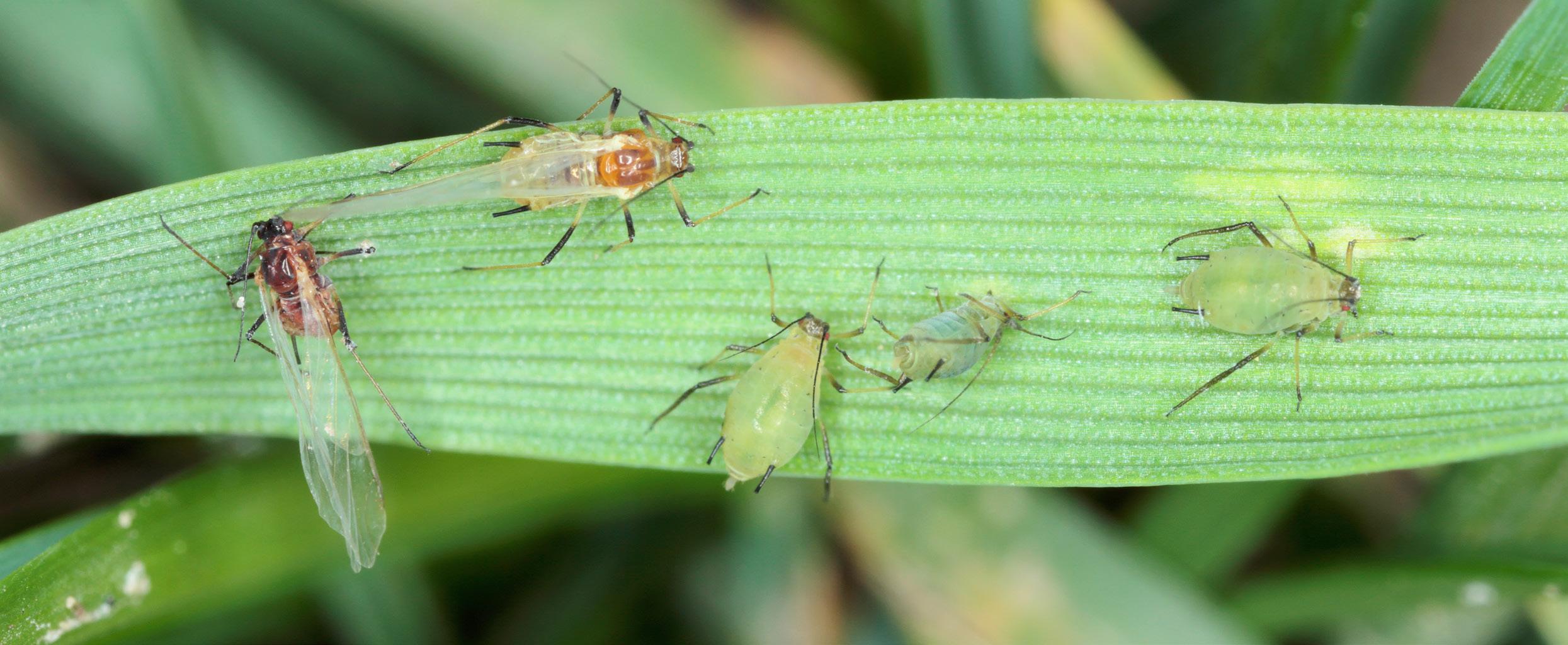
Cereal Plant Growth Regulators
Spring Product Range
Achieving good standing crops to prevent harvesting difficulties and to maximise yields often relies on effective use of growth regulators
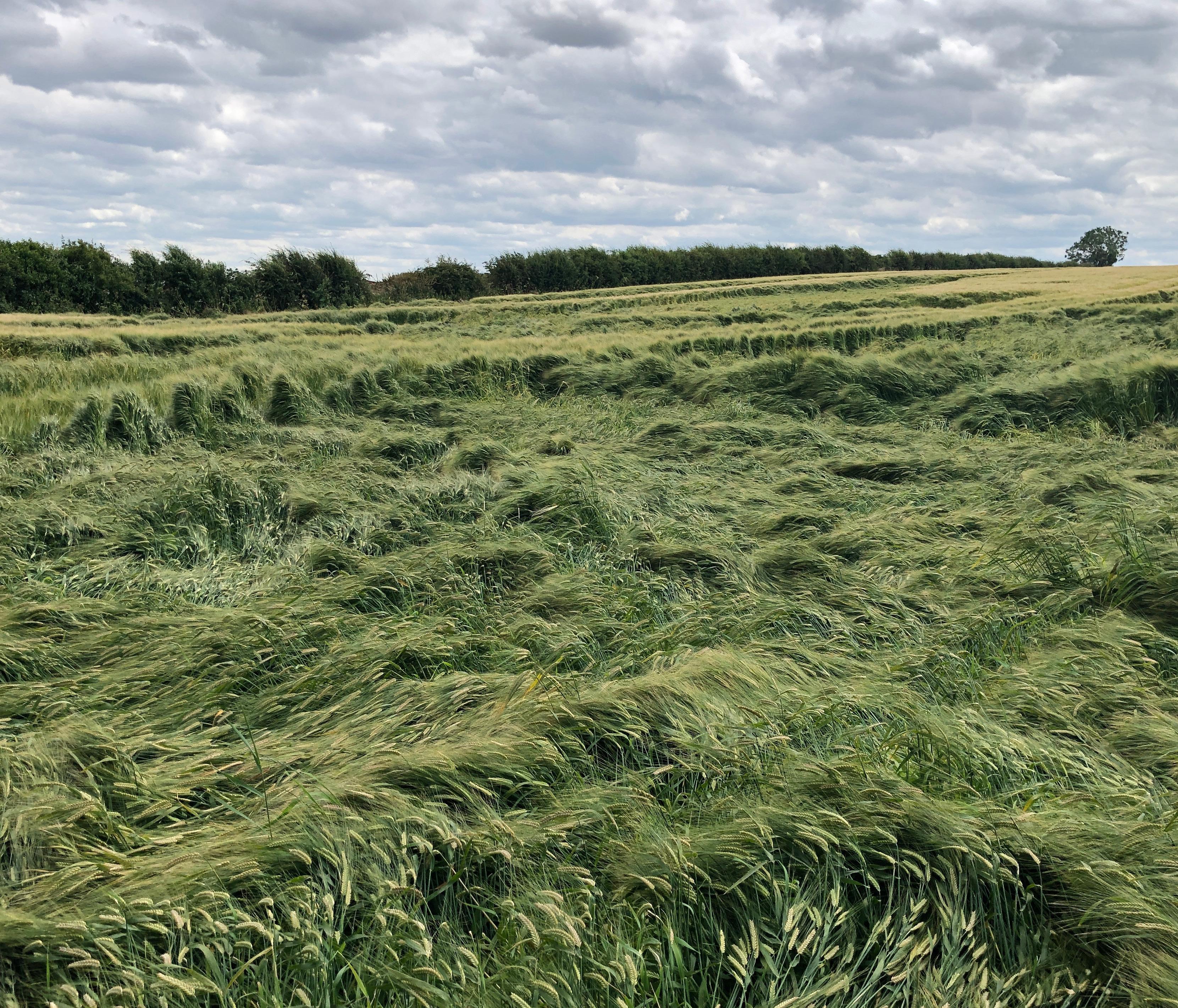
Trusted PGRs for targeted Lodging Risk Management this spring.
Achieving strong, well-structured crops that resist lodging is essential to ensure ease of harvesting and to optimise yield and quality.
Successful results depend on timely application and appropriate product selection.
Key Benefits of PGRs
• Rapid, consistent results across a range of conditions
• Strengthening of lower and upper internodes
• Thicker stems, even tillering and improved root anchorage
• Reduced stem lodging and brackling risk, especially in barley
Assess Lodging Risk Early
• Monitor for wet or waterlogged soils, which increase root lodging risk
• Assess fields for history of lodging or poor drainage
• Implement lodging risk assessments as a routine part of crop planning
Early intervention allows for the most effective use of PGRs and maximises yields.
Consequences of Lodging
• High yield loss in severe cases (especially if it occurs at ear emergence)
• Reduced grain quality (e.g. low Hagberg falling numbers)
• Higher drying and combining costs
• Delayed harvest and diminished crop value
SPRING PGRs - PRODUCT OVERVIEW

SC formulation, 480 g/l ethephon
CLAYTON SQUAT ™
SC formulation, 720 g/l chlormequat
CLAYTON TRUSS™
EC formulation, 250 g/l trinexapac-ethyl
TEPHON™
Root lodging caused by loss of anchorage of the crown roots in the soil is the most damaging and prevalent type of lodging in the UK, often occurring during very wet periods in early summer.
Whilst stem lodging often occurs closer to harvest when stem strength can reduce by up to 50% during grain fill in the ear.
Good agronomic practices e.g. later drilling date and lower seed rates help produce stronger roots and better anchorage to protect against root lodging, alongside using PGRs which can be vital to prevent stem lodging and also help against root lodging as well.
PGR benefits include;
• Quick, safe and reliable activity
• Shorten and strengthen lower internodes
• Stem thickening, even tillering and improved rooting
• Shorten upper internodes to prevent stem lodging and reduce brackling
Plant Growth Regulators
Application programme
Early (GS31/GS32): e.g. Clayton Squat, Produces shorter lower internodes, thicker and stronger stems, reducing lodging and improved rooting for anchorage and uptake of water and nutrients.
Early chlormequat-based products provide the cornerstone of PGR programmes and offers growers security for yield and quality.
Modes of action
Gibberellins (natural plant growth hormones) are produced at the nodes to initiate cell elongation below the growing point and PGRs such as chlormequat, prohexadione and trinexapac all act by inhibiting the biosynthesis of gibberellin, whereas ethephon breaks down ethylene to inhibit elongation.
Early PGRs applied at GS30/31 or at GS32 needs to work quickly to shorten and strengthen the lower internodes.
PGRs are an integral part of effectively managing lodging risk and growers should carefully monitor crop growth stage to ensure accurate timing application.
Potential implications of lodging
Reduced yield, lower quality and increased combining and drying costs, with economic loss greatest when crops lodge early in the season.
On average 20% of the UK wheat area is lost to lodging every 3-4 years. In severe cases between 50-75% of field yield can be lost if crops lodge at ear emergence.
Later lodging has less effect on yield but will impair quality e.g. Hagberg falling number and often causes harvesting delays which reduce farm profitability.
Mid to late (GS37 onwards): e.g. Tephon, Clayton Truss or prohexadione-based PGRs
Flexible application window targets shortening/strengthening of upper internodes to prevent stem lodging, late lodging protection of yield & quality or to reduce brackling in barley to improve harvest efficiency.
Preventing or suppressing lodging during the vital later ‘crop heading’ stage allows optimum fertiliser use for maximum yields, and lodging control may be enhanced by using an approved chlormequat product earlier followed by later applied ethephon-based PGRs.
Tephon ™
Mid-to-late season PGR for upper stem strength and final height control.
Cereals
Active Ingredients: 480 g/l ethephon
Crops (Cereals)
Use Rate & Timings:
SC Formulation Soluble Concentrate
Winter and spring barley, winter wheat, winter rye, winter triticale.
Winter Barley: See product label for full details
High lodging risk crops: use a sequential treatment of an approved formulation containing chlormequat e.g. Clayton Everest followed by Tephon at 0.75 L from GS37 up to and including GS49. Optimum timing for Tephon is at GS37.
Low lodging risk crops: where lodging is not expected to be severe, the crop may be treated with a sequential programme of an approved formulation containing chlormequat e.g. Clayton Everest followed by a reduced rate of Tephon at 0.5 L from GS37 up to and including GS49.
Winter Wheat: See product label for full details
For best control use a sequential programme of an approved chlormequat product e.g. Clayton Squat followed by Tephon at 0.5 L/ha from GS37 up to and including GS45. Where the crop has not received prior chlormequat treatment apply Tephon at 0.75 L/ha from GS37 up to and including GS45.
Water volume: Apply the recommended rate of Tephon in 200-400 litres water/ha.
Flexible application window – effective lateseason lodging protection.
Reduces stem elongation and brackling –especially in barley.
Complements early PGR programmes – Ideal for follow-up after chlormequat.
Reliable performance under high lodging pressure.
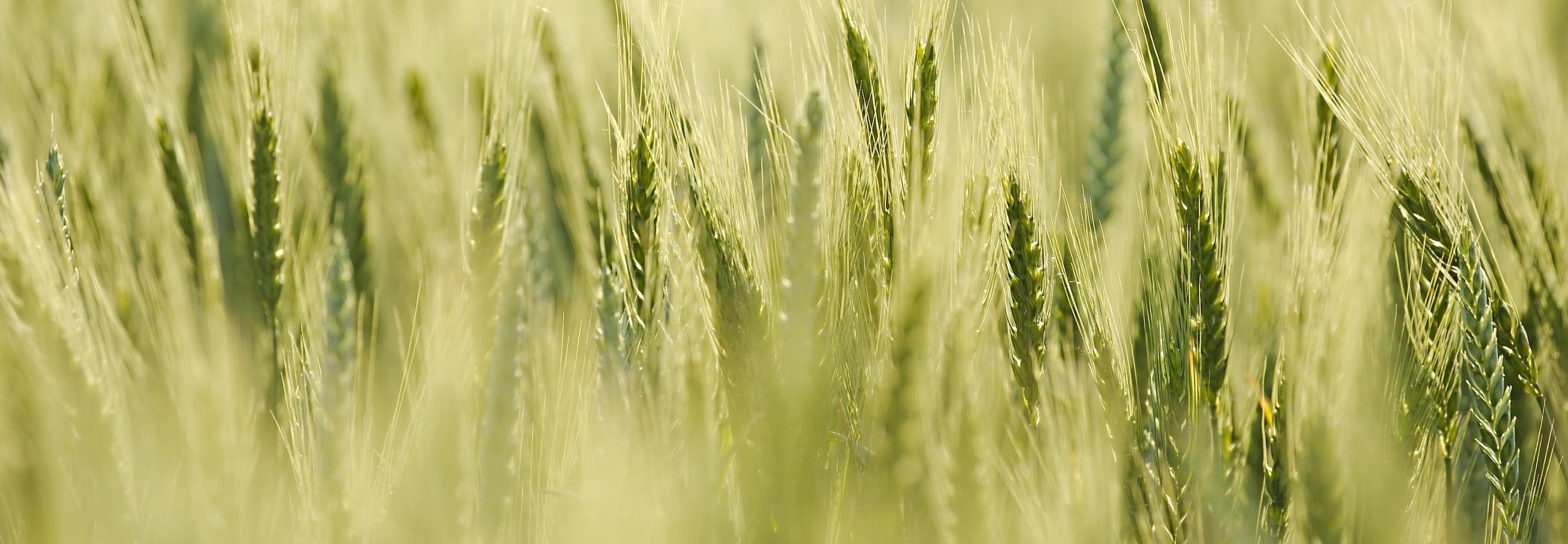
For further information on Tephon, please refer to the product label and for information on compatibility tank mixes, please contact us at info@claytonpp.com
Clayton Truss ™
Advanced, late-season PGR for height control and harvest optimisation.
Cereals
Active Ingredients:
Crops (Cereals)
Use Rate & Timings: (See product label for full details)
250 g/l trinexapac-ethyl EC Formulation Emulsifiable Concentrate
Winter and spring wheat, winter and spring barley, winter and spring oats, rye, triticale and durum wheat.
Winter Wheat: Apply at 0.4 l/ha between the leaf sheath erect stage (GS30) but before the flag leaf extended stage (GS41).
Spring Wheat: Apply at 0.4 l/ha from the leaf sheath erect stage (GS 30) but before the third node detectable stage (GS 33).
Winter Barley: Apply at 0.4 l/ha between leaf sheath erect stage (GS30) but before the third node detectable stage (GS 33) or Apply at 0.6 l/ha from the flag leaf just visible stage (GS 37) but before the flag leaf extending stage (GS 41).
Spring Barley: Apply at 0.5 l/ha from the leaf sheath erect stage (GS 30) but before the third node detectable stage (GS 33).
Winter and Spring Oats: Apply at 0.4 l/ha from the leaf sheath erect stage (GS30) but before the 2nd node detectable stage (GS32).
Rye, Triticale and Durum Wheat: Apply at 0.4 l/ha between the leaf sheath erect stage (GS30) but before the 3rd node detectable stage (GS 33).
Trinexapac-based formulation – Proven performance in reducing stem lodging.
Targets final height to prevent late-season leaning and improve combine entry.
Barley-specific benefits – Reduces brackling and maintains ear position.
Complements early applications of chlormequat for season-long protection.

For further information on Clayton Truss, please refer to the product label and for information on compatibility tank mixes, please contact us at info@claytonpp.com
Clayton Squat ™
Effective lodging management by promoting stronger stems, improved root anchorage, and more uniform crop development in Cereals.
Cereals
Active Ingredients: 720 g/l chlormequat
Crops (Cereals) Winter and spring wheat, winter and spring barley, winter and spring oats.
Use Rate & Timings: See product label for latest application timing and max. individual & total dose for each crop. Water volume: Apply the recommended rate of Clayton Squat in at least 200 litres water/ha.
High-concentration SC formulation containing 720 g/l chlormequat
Strengthens roots and stems – Enhances anchorage and root lodging resistance.
Promotes even tillering - Improves standability and crop structure.
Flexible tank-mix compatibility for broader crop protection and nutrition programmes.
